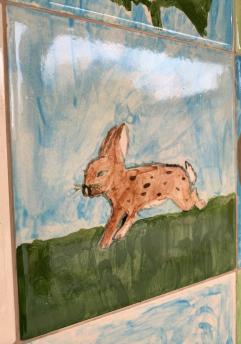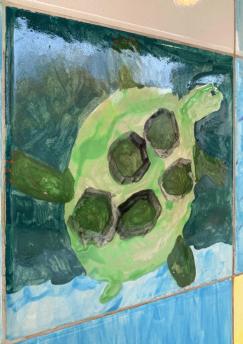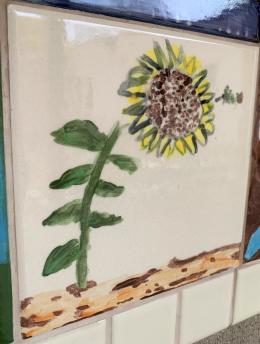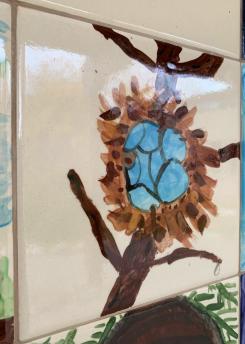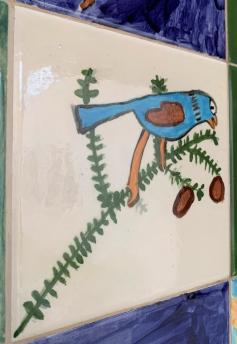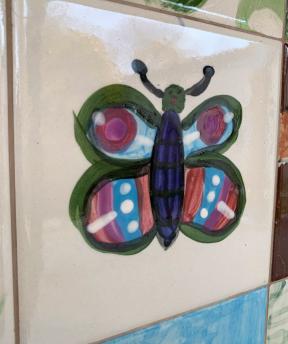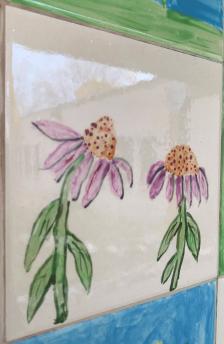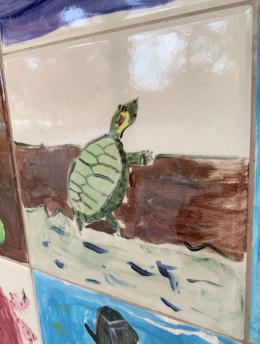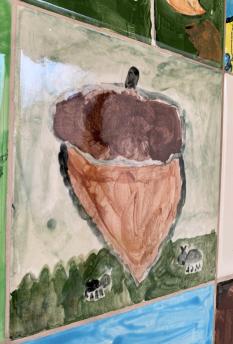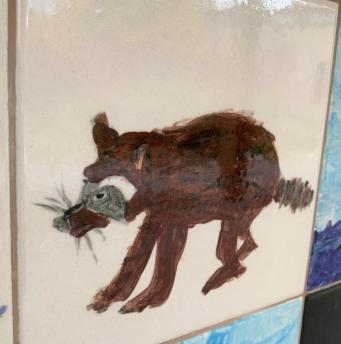Children's Environmental Wall
Made possible by The Ford Motor Company Fund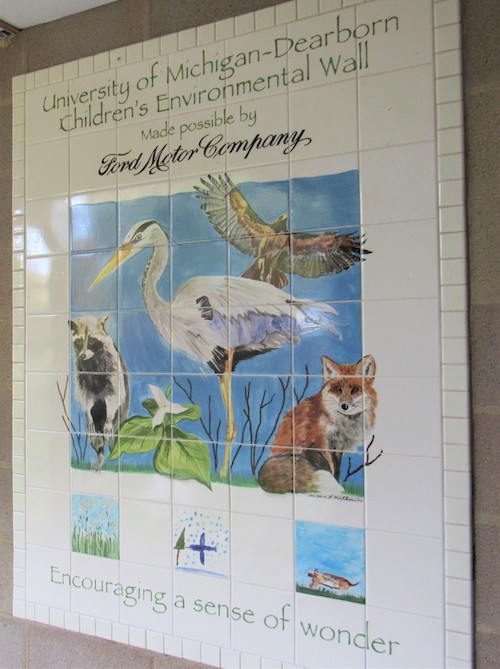
In the fall of 1997, as the funding for the construction of the Environmental Interpretive Center was being completed, Ford Motor Company sponsored the development of the Children’s Tile Wall Project modeled after a similar project at the Kansas City Zoo. Conceptually, the tile wall was to consist of hundreds of ceramic tiles designed and painted by children and their parents who had attended educational school programs in the Environmental Study Area. They were asked to artistically express their experiences on ceramic tiles, which were then placed along the exterior wall next to the main entrance of the Center.
Our outdoor school programs offer many opportunities for experiential environmental education. Some details discovered during these programs reflected the detailed adaptations of plants and animals. Details of an acorn, hooks of a burr, wings of an insect, and colors of bird feathers are just some of the features that could be artistically displayed. Tiles for the entrance wall reflected the details that a person observed during a visit. The majority of the tiles were painted by school children ranging from third grade to high school. Some parents and teachers created tiles, too.
The creative process for tile wall participants began with an exploratory walk in our 120+ acre Environmental Study Area. During this walk the program leader would stop and point out specific details of natural features found along the trail and ask everyone to take a close look at details that should go into their tile. Several stops would be made along the trails and participants were allowed ample time to sketch what they observed. Every effort was made to focus the participants on details of discoveries and not on the landscape as a whole.
After the walk outdoors, the group would go back to a classroom where they would select their image and transpose it with pencil to the surface of a tile. They would then use colored glazes to paint their image. The tiles were delivered to Greenfield Village for application of a clear over-glaze and subsequent firing in their kilns.
Susan Miller, a Michigan artist, designed the layout for the wall, ordering tiles by season. She also created the Blue Heron Murals located at each end of the wall as well as the acknowledging of the Ford Motor Company Fund as a major contributor to the development of the Center and the Children’s Tile Wall Project in particular. Rustin Tile Company then completed the installation of the tiles.
On your next visit to the Center, please take a few moments and experience, as in nature, the diverse and wondrous creations on display on the Ford Children’s Tile Wall.
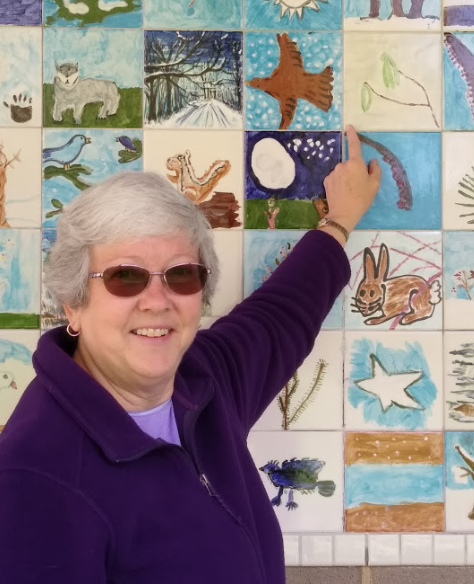
EIC Tile Wall Artists
"My 3 sons and I all made tiles in 1997. I remember going out into the woods with Rick Simek and him telling everyone to 'think small,' to look closely at nature and draw something detailed. I often walk the trails in all seasons, alone or with friends and enjoy the wildlife. I see something new every time I visit. Thank you for preserving and maintaining this property for future generations". -Emily Nietering
"Spending afternoons at the EIC and natural areas with my dad gave me an appreciation for quiet nature walks, an ability to notice subtleties like a turtle head poking out of the water, and an admiration for the screw that holds the world together. I hope that students of the future see the tadpole and grasshopper I painted on the tile wall out front, peek at the serenity of the rain garden, and are able to bring with them even an ounce of memories and meaning that I hold in connection to the Environmental Interpretive Center". -Jessica Briscoe ( Perrin)
Appreciating the Artwork
